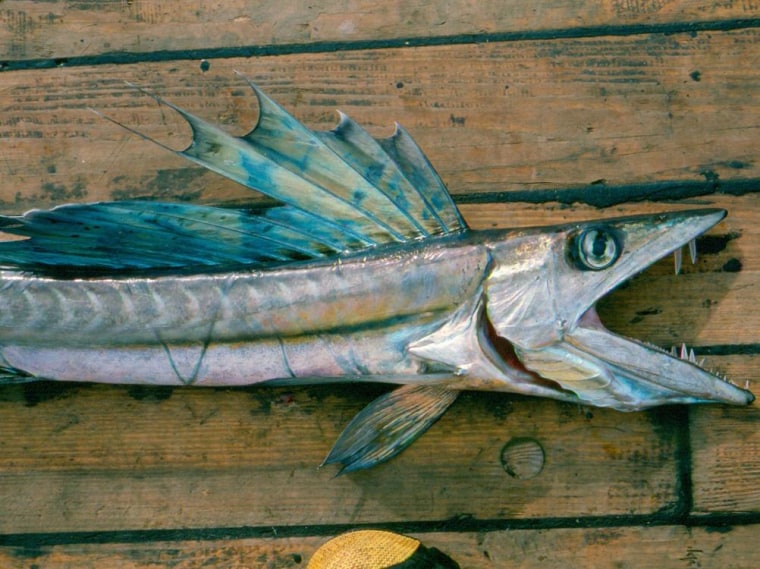Visitors to Jennette's Pier in Nags Head, North Carolina, were shocked last week when an evil-looking fanged fish washed up alive on the shore.
The monstrous fish has been identified as a long-snouted lancetfish (Alepisaurus ferox), a nocturnal predator that's rarely seen near shore. The fish are known not only by their large fangs and tall dorsal fin, but also by their habit of eating their own species.
Because it's a relatively uncommon fish that inhabits the open ocean, little is known about its life cycle. In adolescence, lancetfish are hermaphrodites (having both male and female sex organs), though there's no evidence of adult hermaphrodites. [See Photos of Lancetfish and other Freaky-Looking Fish]

More about the lancetfish from WNCN and WBTV
Lancetfish are also known as handsaw fish, because of their prominent, jagged dorsal fin, which runs almost the entire length of their back. The fish have no scales, and their skin is instead covered with pores.
They can grow to be as long as 6.5 feet (2 meters) in length. Lancetfish generally feed at night, and in addition to dining on other lancetfish, they also eat crustaceans, squid and smaller species of fish.
Lancetfish are in turn preyed upon by seals, sharks and other large fish, including tuna. They're not considered a good fish for human consumption — instead, they're regarded as a "trash" fish that sometimes takes bait intended for more profitable catches.
Scientists speculate that the lancetfish is an ambush predator — it probably uses its big dorsal fin to accelerate in short bursts to overcome prey. The fish are mainly found in open waters in tropical and subtropical oceans but have been known to travel as far north as Greenland and Iceland.
The fish found on North Carolina's coast was released back into the water — but it washed up to shore again, suggesting that there was something wrong with it.
— Marc Lallanilla, LiveScience
This is a condensed version of a report from LiveScience. Read the full report. Follow Marc Lallanilla on Twitter and Google+. Follow LiveScience on Twitter, Facebook and Google+.